SaaS content marketing is a must-have for Software as a Service (SaaS) companies, yet it can feel like a massive undertaking. Why? Because it involves creating content that not only address specific pain points but also challenge audience experiences. This way, SaaS companies can help their potential customers move through the customer journey.
But why is content marketing for SaaS companies different from other content?
How can you approach your content marketing efforts and know you’re on the right track?
It can feel impossible to know where to start… until now.
Our SaaS content marketing guide has strategies, examples, and tactics to help you create a content marketing strategy that educates users, attracts leads to your website, and convert prospects to customers.
We’ll walk you through steps for defining your target audience, creating high-performing content, and tools for scaling your efforts.
If you have a SaaS product and you want to grow with content marketing, this is the guide for you.
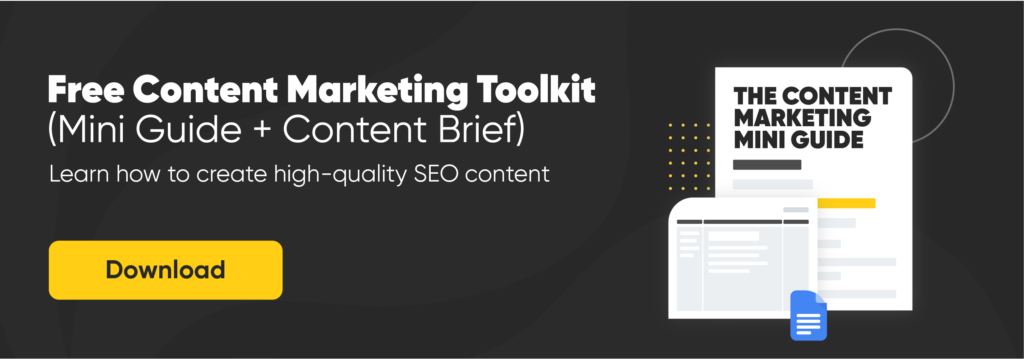
Why content marketing for SaaS companies works
According to a DemandGen report, 68% of B2B buyers consider it very important to see relevant content from the vendors they’re buying from. No matter how good your sales team is, bad content can drive your potential customer away before they even contact you.
There are so many ways you can market your SaaS product. Knowing that content takes a long time to create and even longer to show results, why do we recommend it?
The answer to this is two-fold.
SaaS customer journey is complex and non-linear
Content marketing is the most powerful way you can show up for your potential customers exactly when they need you.
Way before your customer considered giving you their money, they faced a pain point that they couldn’t solve on their own. Maybe they didn’t even know how to name that pain point.
As they started looking for solutions, they turned to sources they know and trust: Google, their colleagues, YouTube, forums, and social media. Without publishing your own content, your chances of becoming the go-to answers are low.
If it was your content that helped your future customer solve their pain point, you’re now on their radar. As they face new challenges, they’ll come to you for answers again.
They may have started on your blog, downloaded your white paper, watched your webinar, and went back to your blog in search for another answer.
Then, after talking to one of their peers and seeing great reviews, they sign up for a free trial and book a demo with you.
Because you had a piece of content for every one of their questions, their trust kept increasing, and you won a customer.
Customer journey was presented as a funnel for a long time. However, a more realistic way to look at it is a marketing lifecycle. Julia McCoy described this for Content Marketing Institute as a continuous loop, where buyers move from one stage to another fluidly:
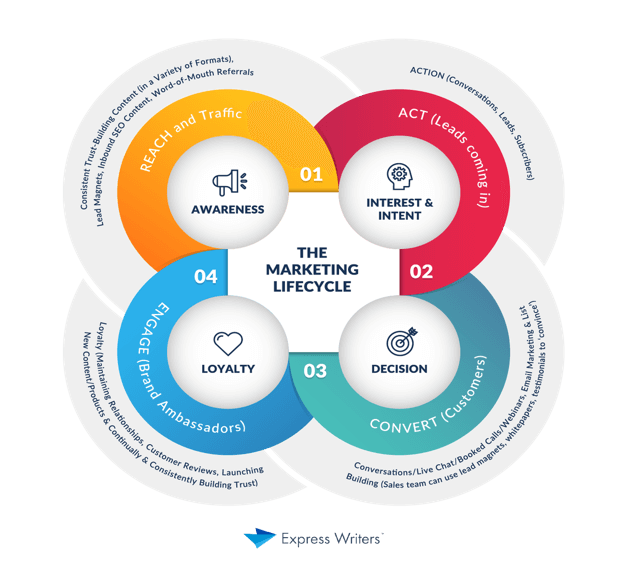
Content marketing is the most powerful way you can show up for your potential customers exactly when they need you.
People don’t buy software, they buy outcomes
Let’s say you’re a project management SaaS company. If you only created content focused on ‘project management software’ topics, you probably wouldn’t see the results you want to.
Why?
This can be explained through the Jobs to be Done (JTBD) framework. It’s “the process a consumer goes through whenever she aims to change her existing life-situation into a preferred one, but cannot because there are constraints that stop her.”

In other words, people care about the outcome they’ll get; your SaaS product is just the means to an end.
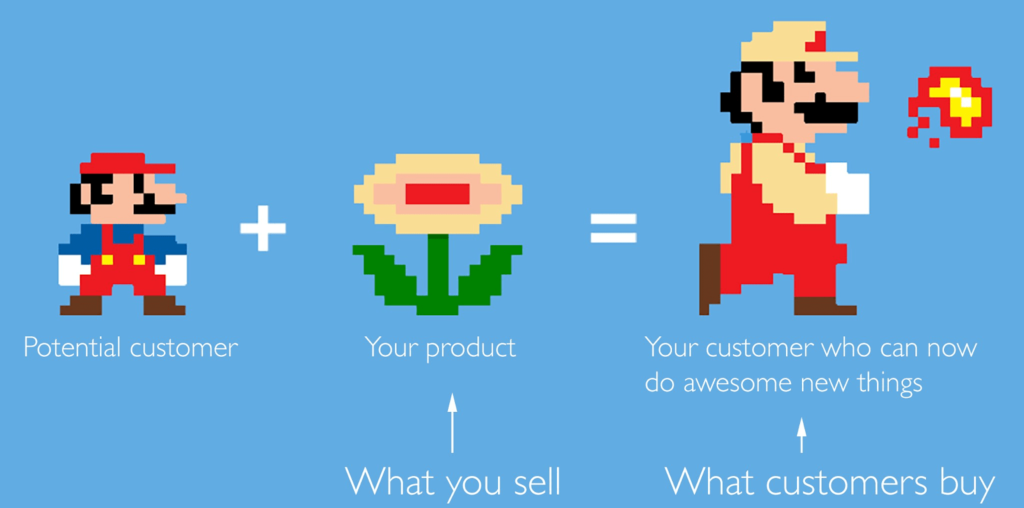
If we go back to our example of the project management tool, we can say that people don’t buy a project management software.
Instead, they buy:
- Organized and actionable meetings
- A process that helps them always hit deadlines
- A productive yet calm working environment
When you take the JBTD approach not just to your product, but to your content marketing (and your digital marketing overall), you will help potential customers reach their desired outcomes.
Want some examples? You got it.
FreeAgent, accounting software for small businesses, helps their audience prepare for key tax dates and deadlines:
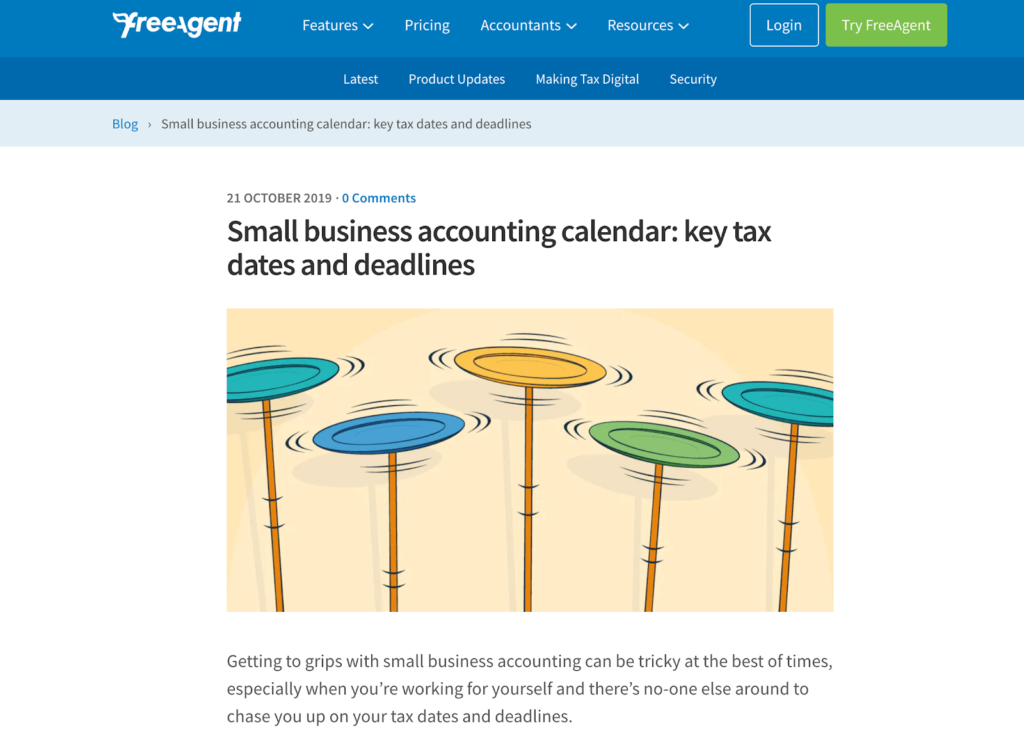
Asana, a project management tool, helps their readers run effective meetings:
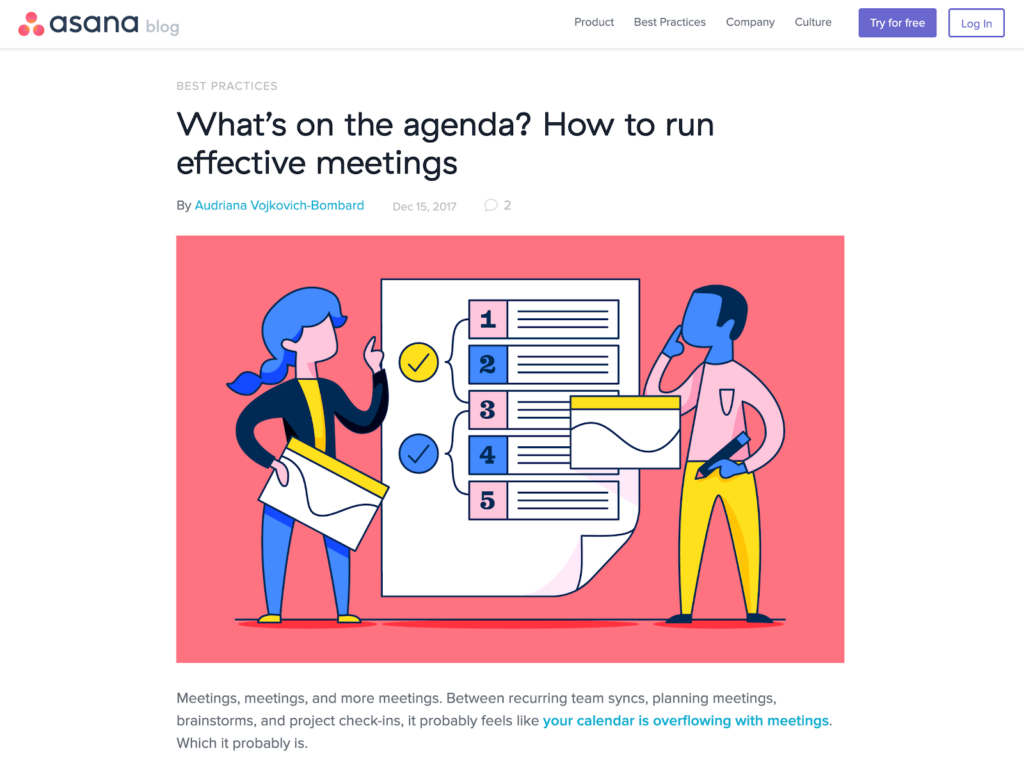
And Campaign Monitor, an email marketing platform, helps e-commerce stores prepare their campaigns for the holiday season:
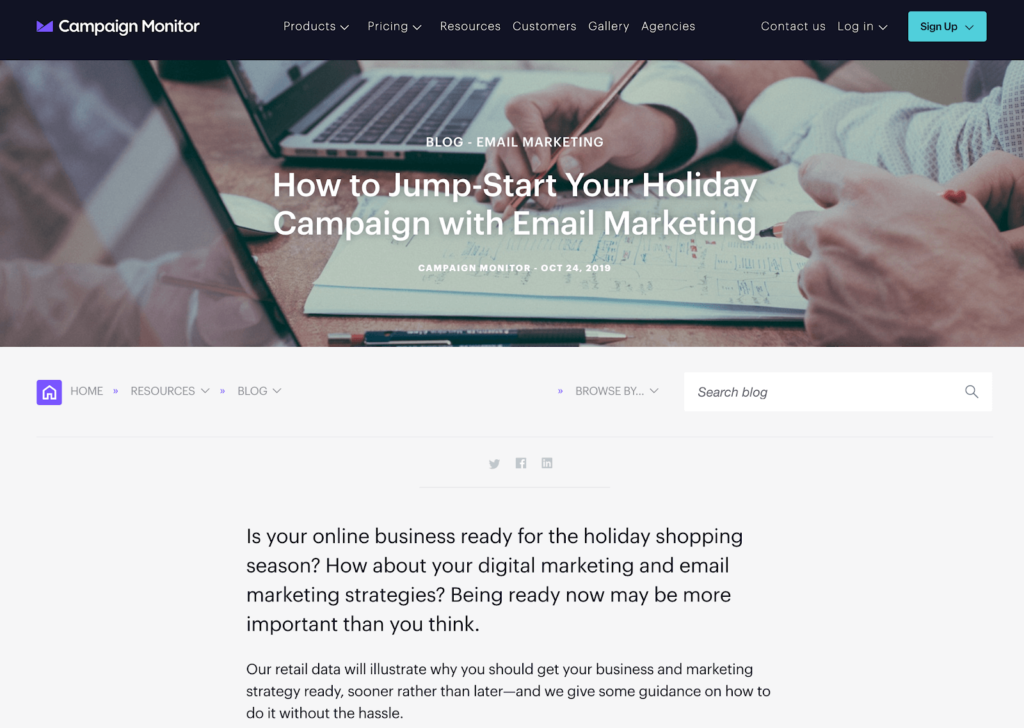
By taking this approach, these companies become a valuable resource for their readers—including those that just discovered them, as well as their existing customers.
When you create the right content, you become a regular part of your reader’s routine. So when the time comes to show how your product also fits into that routine, they’ll be excited to try it out.
Is SaaS content marketing worth the investment?
By now, you might be thinking: “This takes time, money, and effort—how will I know it’s worth it?”
To answer that question, let’s analyze the cost of content marketing and the potential return on that investment (in other words, content marketing ROI).
The cost of SaaS content marketing
To run a content marketing operation, you can go one of three ways: building an in-house content team, hiring an agency, or hiring one or more freelancers.
In-house content team: You might start with two or three content team members. To give you an idea of the cost of such team, here are some yearly content marketing salaries from successful SaaS companies:
United States:
- $60,000 to $70,000 for content marketing managers (Glassdoor data for Workfront and Wrike)
- $45,000 to $50,000 for content marketing specialists (Glassdoor data for ZoomInfo and TechSmith
Ireland:
- €54,000 to €59,000 for content marketing managers (Glassdoor data for Intercom)
- €27,000 to €29,000 for content marketing specialists (Glassdoor data for Teamwork)
A content marketing team with two or three people will cost you between $100,000 and $150,000 per year. That’s between $8,000 and $12,000 per month. (You’ll spend about a third of that if you start with just one person.)
Hiring an agency: If you look at some of the leading agencies that work with SaaS companies, you’ll find that you’ll need a minimum of $2,500 per month to start working with them depending on the size of your business and your needs. Grow and Convert start at $8,000 per month and many other agencies will cost you $10,000 or more per month.
Hiring one or more freelancers: Excellent freelance writers who specialize in SaaS are a significant investment. Their rates usually start in the $600-$800 range per blog post and depend on length and complexity. To publish three times per month, you’ll end up in the $2,000 to $3,000 ballpark per month. If you hire an SEO consultant or a content strategist freelancer on top of that, you can expect about the same cost for them, too.
The conclusion? High-quality content marketing will cost your SaaS business anywhere between $3,000 and $15,000 per month.
The return on investment (ROI) of SaaS content marketing
To see the potential impact of content marketing for software as a service companies, let’s look into the results of a well-known SaaS company: Atlassian.
Let’s say you’re looking to enhance your product development process. You want to learn more about agile methodology and the kanban process to find which one would work best for you. When you search for resources on it, this is what you come across:

This article from Atlassian is the first organic result you see. It’s a relevant, comprehensive resource for someone looking to improve the way they build products.
If we look at the performance of this blog post in Ahrefs, here’s what we’ll find.
First, this post attracts almost 4,000 organic visits each month:
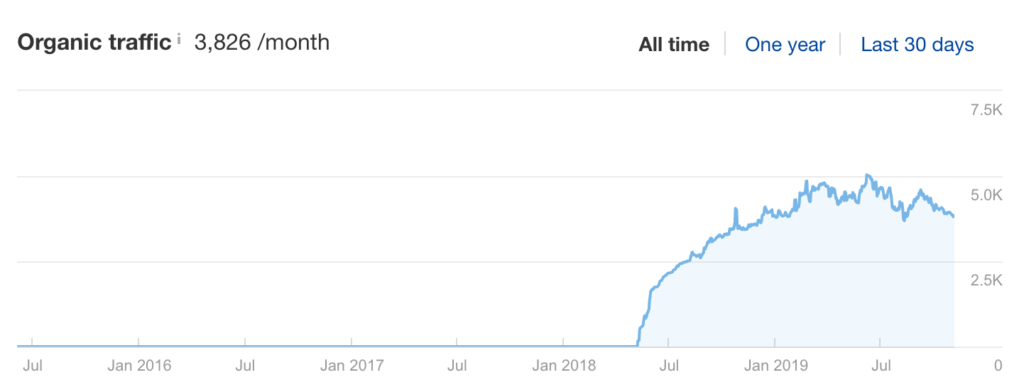
It also ranks in the top three positions for more than 200 keywords:
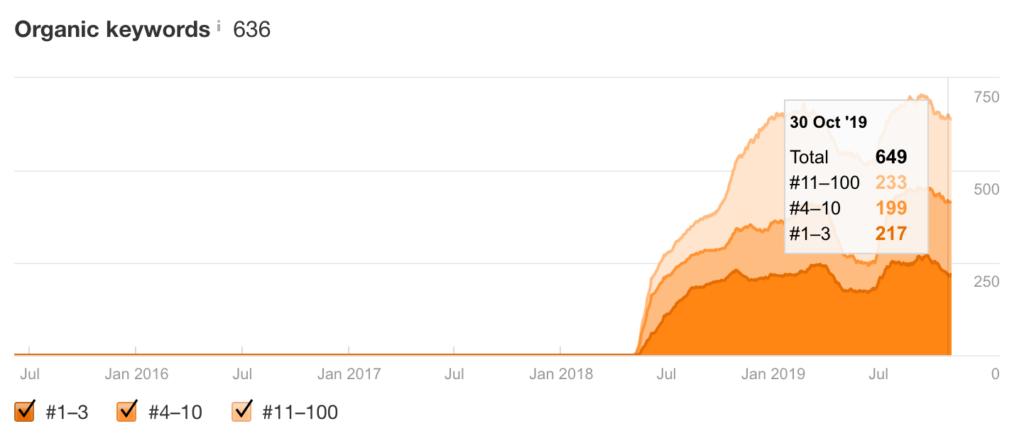
Finally, its traffic value is over $17,000! Traffic value is explained by Ahrefs as “the equivalent value of the organic search traffic, should that traffic have been acquired via PPC”:
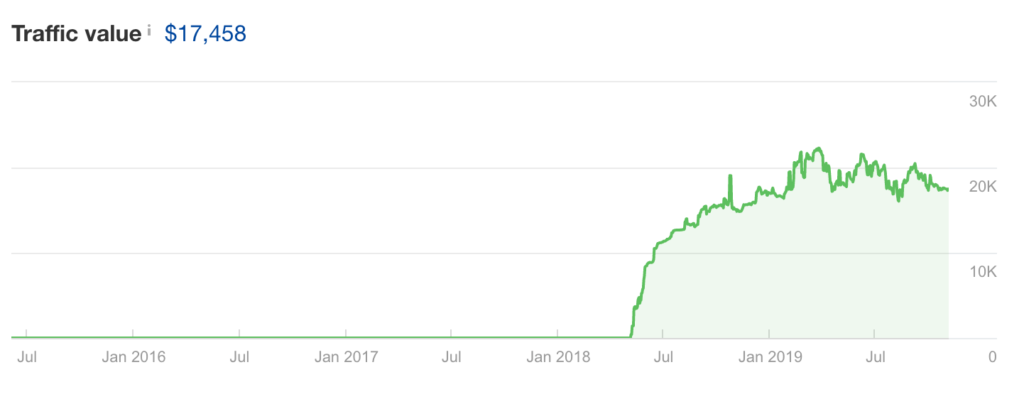
“But traffic doesn’t equal revenue!” If this is what you’re thinking, you’re not wrong. But qualified traffic increases your chances of turning a casual reader into a loyal subscriber, a free trial user, and a paid customer.
Once you’ve read this article, Atlassian offers more resources on closely related topics, as well as signing up with your email for more articles. They can use this to nurture and convert this reader into a customer down the line.
And that’s just one article. They have hundreds of them.
The conclusion? Marketing your SaaS business with a well thought-out content marketing strategy can bring you significant results.
What it takes to develop a successful SaaS content strategy
Let’s dive into the steps you need to take to run a high-performing content operation. These steps include:
- Defining your target reader
- Brainstorming content ideas
- Defining goals and CTAs based on the customer journey
- Establishing a publishing frequency
- Promoting your content
- Repurposing your content
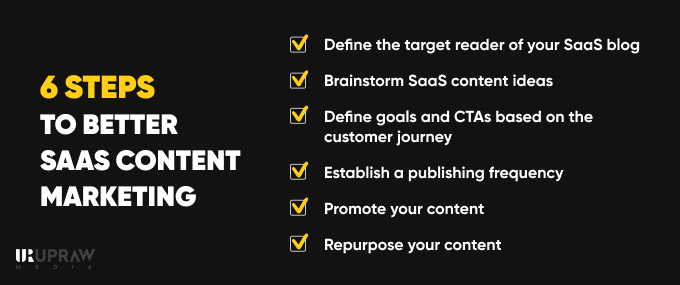
Step 1: Define the target reader of your SaaS blog
Before you do any content creation, you need to know who you’re creating your content for.
There are two common traps SaaS content marketers fall into when going through this step.
First trap is being too vague about your target reader. For example, a CRM software may say their target audience are business owners. An email marketing software could say they’re targeting marketers.
Here are great examples of SaaS companies that are doing the exact opposite. Dubsado has been called the “CRM for creatives” as they provide a client management system specifically designed for consultants, artists, photographers, and similar small businesses.
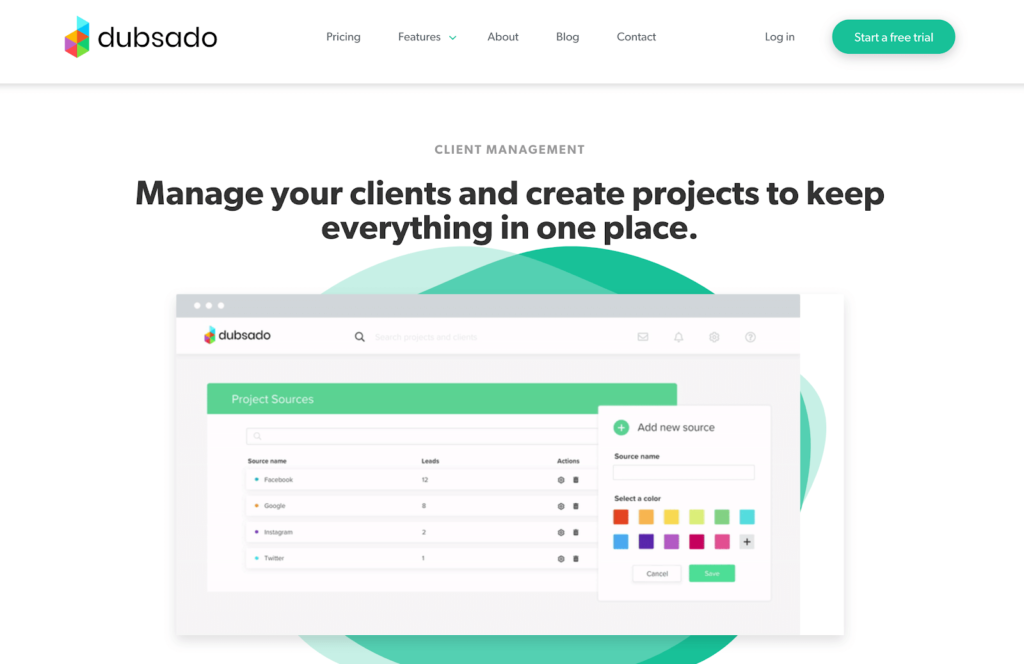
Another good example is ConvertKit. They’re not just an email marketing platform; they position themselves as “email marketing tools and automation for online creators.” This includes customers like bloggers, speakers, course creators, and YouTubers.
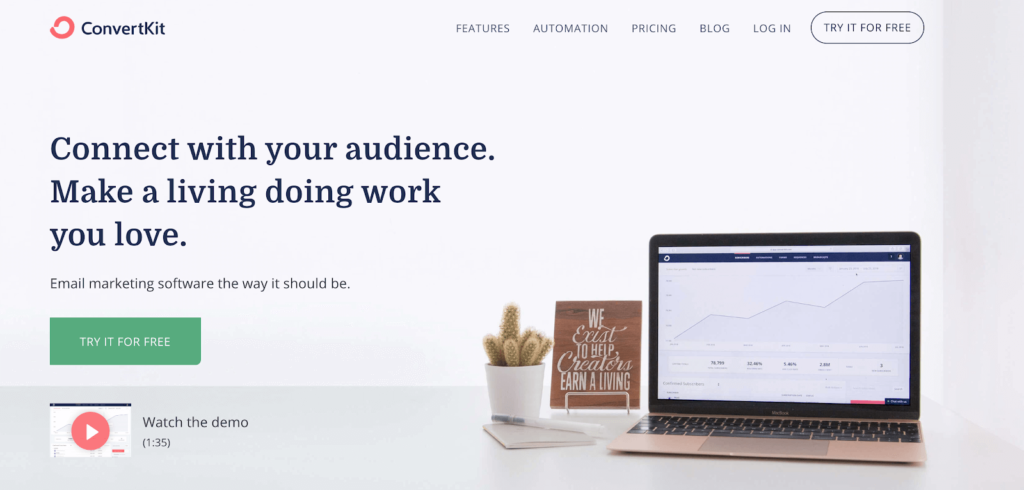
Being this specific about your ideal customers means you can create content that speaks to their pain points.
For example, even though we don’t do SaaS content marketing here at Upraw (we do PPC), we know this is a topic that matters to SaaS marketers—which is why you’re reading this.
The second trap SaaS marketers fall into is focusing on the demographics and generic traits of their target reader and customer. These buyer personas often include age, gender, and a job role.
However, this approach generalizes your readers and turns them into a fictional character. It’s hard to write with an imaginary person in mind.
Instead, you want to know the answers to questions such as:
- What does their usual day look like?
- Which roadblocks and pain points do they face in their work?
- Are they managing a team, or are they the ones in the trenches? (In other words, would they be the ones taking action from your content, or is it their team?)
- What are the weekly, monthly, and quarterly goals in their job?

Start with these questions and use them as inspiration for more.
You can gain these insights by:
- Interviewing your most successful customers
- Analyzing your sales and customer support conversations
- Surveying your email subscribers
Because these will come from your interactions with real people instead of fictional characters, you’ll find it much easier to create content for them.
Keep track of this research and you’ll start noticing the patterns in the outcomes your customers, both potential and existing, are looking for.
Step 2: Brainstorm SaaS content ideas
Next up is topic brainstorm.
By now, you may feel empowered with new insights about your target audience… Or you might feel like your competitors have done it all, and you don’t have a shot at ranking with your new content.
Enter: long-tail keywords.
Long-tail keywords are low-volume, highly specific search terms. Although the popular belief is that these are simply search terms with many words, the truth is quite different.
This graph from Ahrefs visualizes it well:
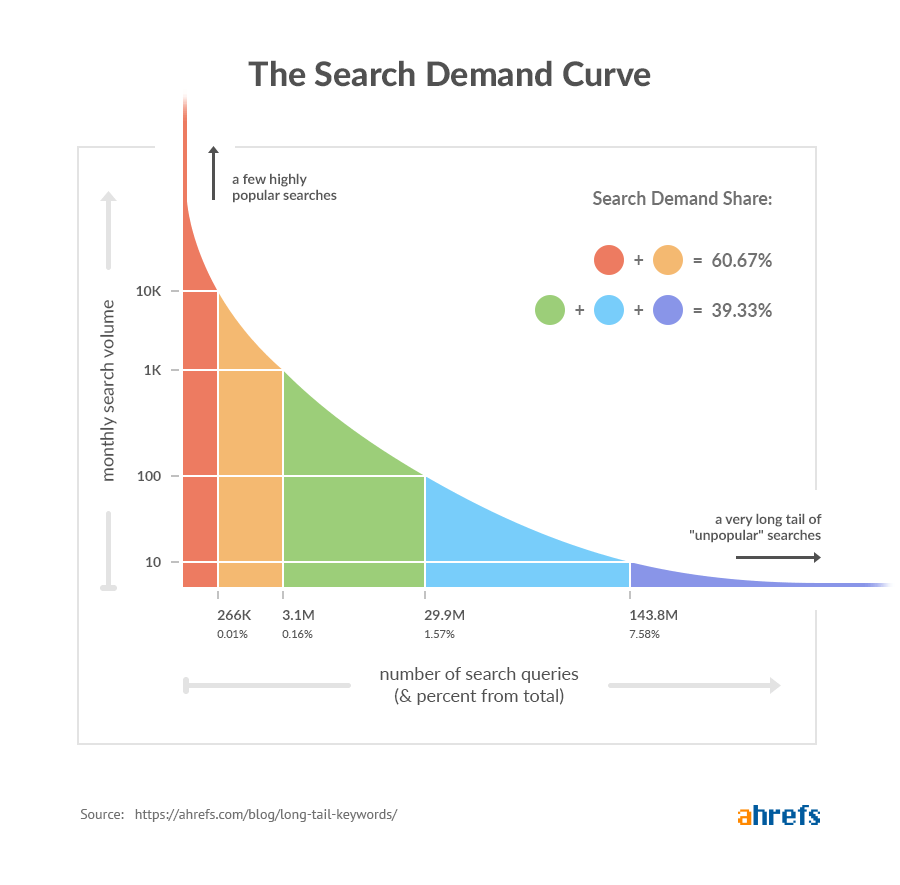
The long-tail keywords are those on the far right section of the graph. In the grand scheme of search engines, these are search terms with less than 100 monthly searches.
However, your industry may be different, and long-tail keywords may be those with up to 10 monthly searches.
To show you how to use the long-tail keyword approach to brainstorm content topics, let’s use the email marketing example again.
If you wanted to just rank for the term “email marketing,” you’d be aiming for the left part of that graph above. It has a monthly search volume of about 90,000 (according to Keywords Everywhere) and Google serves about 4 billion results for it.
On top of that, a keyword report from Ahrefs says you’d need backlinks from more than 400 websites to rank.
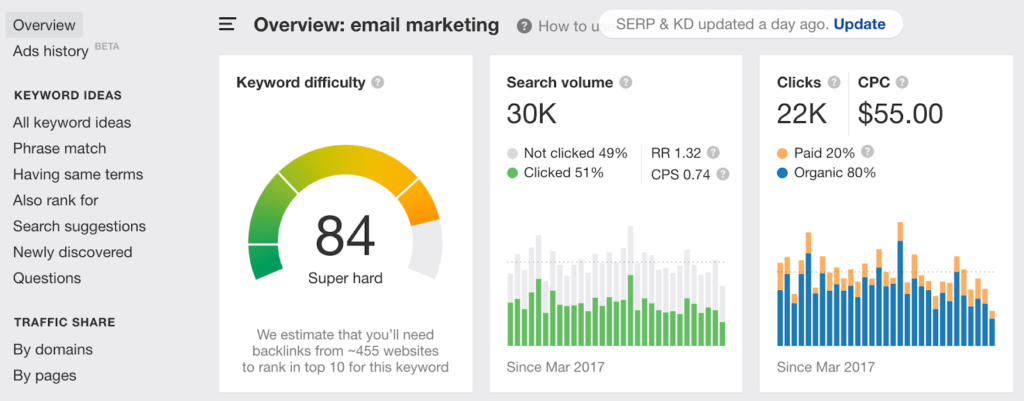
The good news? We can use this report to uncover related long-tail keywords.
Because this topic is so popular, we can focus on search terms with the monthly search volume under 1,000. Ahrefs also has a keyword difficulty filter (a scale from 0 to 100), so we can filter for low difficulty too.
In this example, we used the Having same terms report, and the Questions report, both quite self-explanatory.
In the Having same terms report, we filtered for keyword difficulty up to 25, and search volume up to 800. Here are the ideas we selected as relevant:
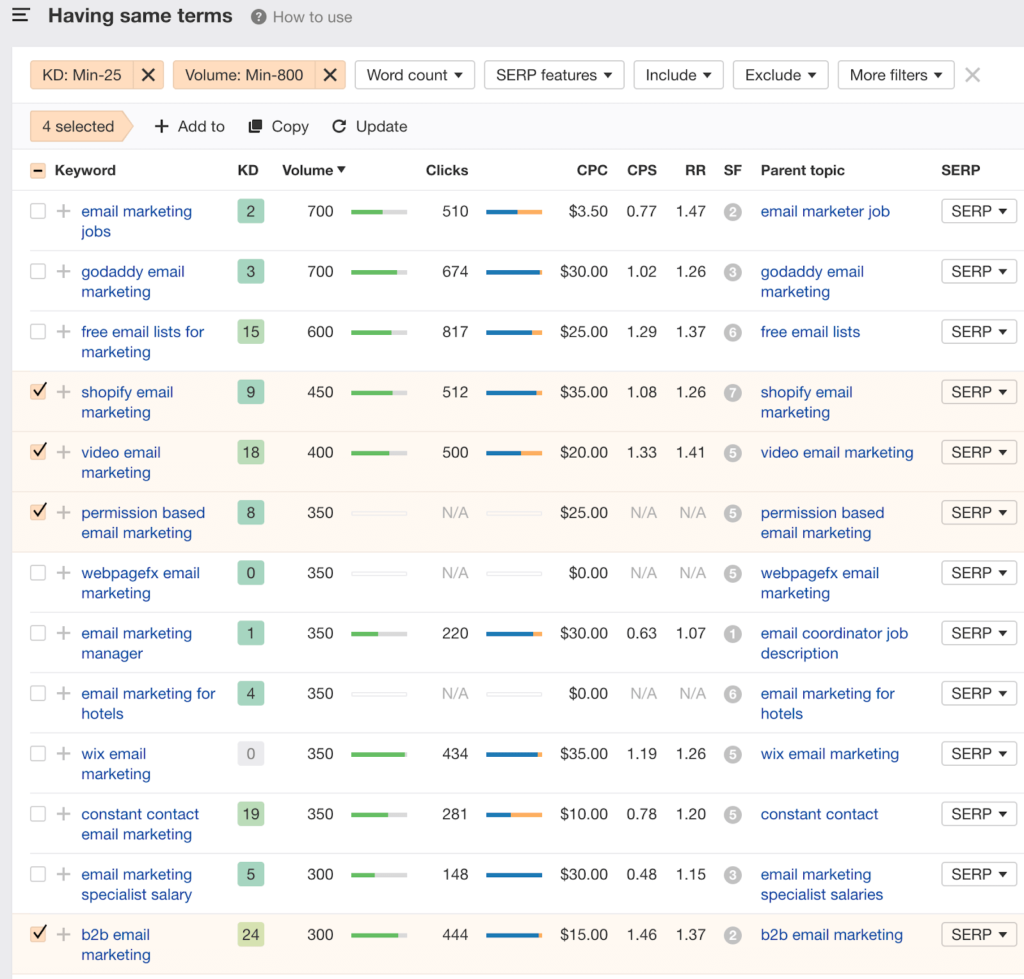
In the questions report, we only filtered by keyword difficulty of up to 30 and selected these suggestions:
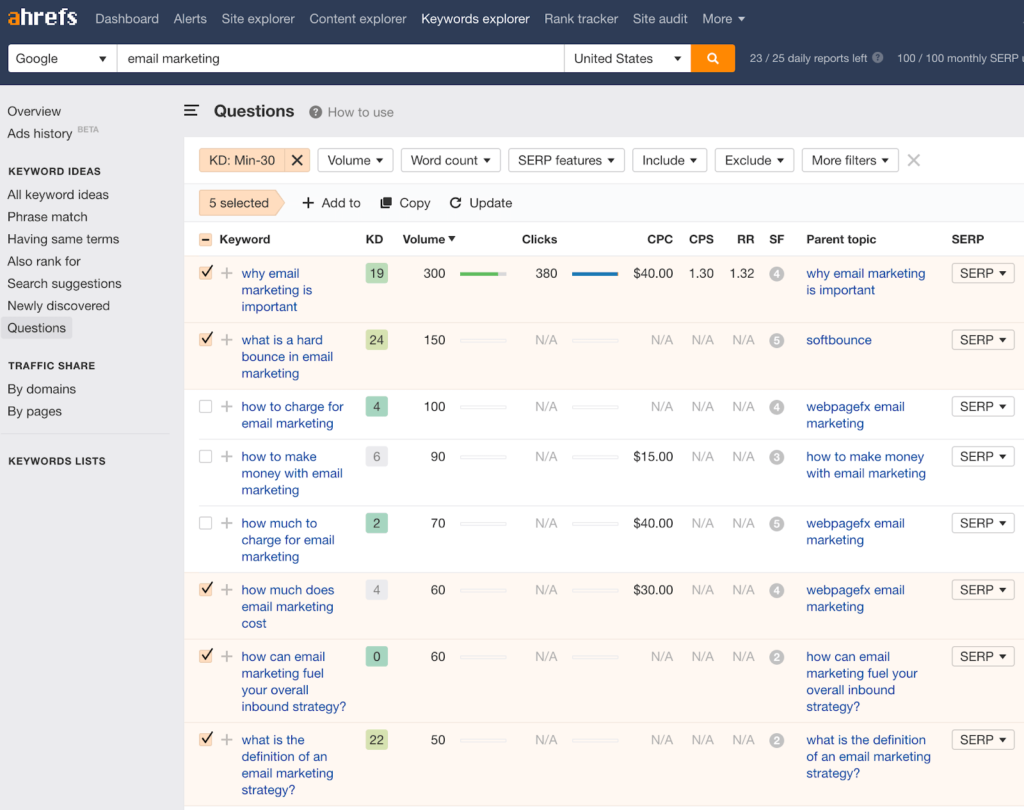
Clicking through one of the keyword suggestions, such as “how much does email marketing cost,” tells us we only need to build backlinks from four websites to rank on the first page of search results.

You can rinse and repeat this process for as long as you’re still getting relevant results. (And yes, Ahrefs is a paid tool, but you can start out with a $7 trial for 7 days and find enough ideas to start making an impact with your content.)
Other options and tools you can combine this process with are:
- Moz (free keyword and link research available)
- Google’s search suggestions, “People also ask” section, and related searches
- AnswerThePublic (free)
Ultimately, your content should answer the questions your target reader has. You’ve identified that in the previous step, so you already know what to target. Simply use this step to find the keywords your audience is using to find those answers.
Pro tip: When you start creating content, you can use PPC ads to see which keywords convert better, as well as to gain insights into real-time search volumes. When you notice a certain keyword outperforms others significantly, you can double down on related topics.
Step 3: Define goals and CTAs based on the customer journey
Although we’ve talked about customer journey as a life cycle rather than a funnel, it’s still essential to apply some sales funnel best practices to your content.
In other words, think about every stage your customer will likely go through before purchasing and ask yourself:
- What will they see as success after consuming this piece of content?
- Which action should they take to move forward after that success?
This will help you define your own goals for each piece of content, as well as the call to action (CTA) you need to include to make that goal happen.
Top of the funnel content
This is your awareness stage. This is where your readers are looking to name their challenge and learn about possible options to solve it.
At the top of the funnel, you should focus on providing educational content packed with valuable tips and insights instead of your SaaS features and capabilities.
Top of the funnel content examples: in-depth blog posts, guides, tutorials, educational videos, podcasts.
Top of the funnel call-to-actions: read more, keep watching, related content.
Top of the funnel goals: pageviews, time on page, watch/listen time.
Middle of the funnel content
At this stage, your reader knows a lot more about the problem they’re dealing with. They’ve also likely selected a few solutions to explore and research.
In your content at this stage, you should insert your product into the conversation. You can deliver value with this content by showing how it fits into your reader’s life, as well as by offering more advanced, gated content for lead generation.
Middle of the funnel content examples: step-by-step walkthroughs that include your software, screencasts and screenshots, product demonstrations, landing pages with white papers, case studies, and ebooks.
Middle of the funnel call-to-actions: download a resource, sign up for a free trial, sign up for a demo.
Middle of the funnel goals: conversions and conversion rates.
Bottom of the funnel content
At this stage, your audience trusts you. They see the potential in your solution. They’re either on your email list or trialing your software. Your job is to convert them into a paid customer.
Furthermore, you also need to ensure you’re helping your customers see success over and over again after they’ve converted. Remember, they’re free to look for better options and providers at all times, so keeping them engaged, educated, and heard is crucial.
These loyal customers will then also become your ambassadors, bringing potential new customers in through the top of the funnel content.
Bottom of the funnel content examples: guides on specific features, in-depth case studies, interviews with your customers.
Bottom of the funnel call-to-actions: sign up for a demo, sign up for a plan, learn how to make the most out of [feature].
Bottom of the funnel goals: conversions and conversion rates.
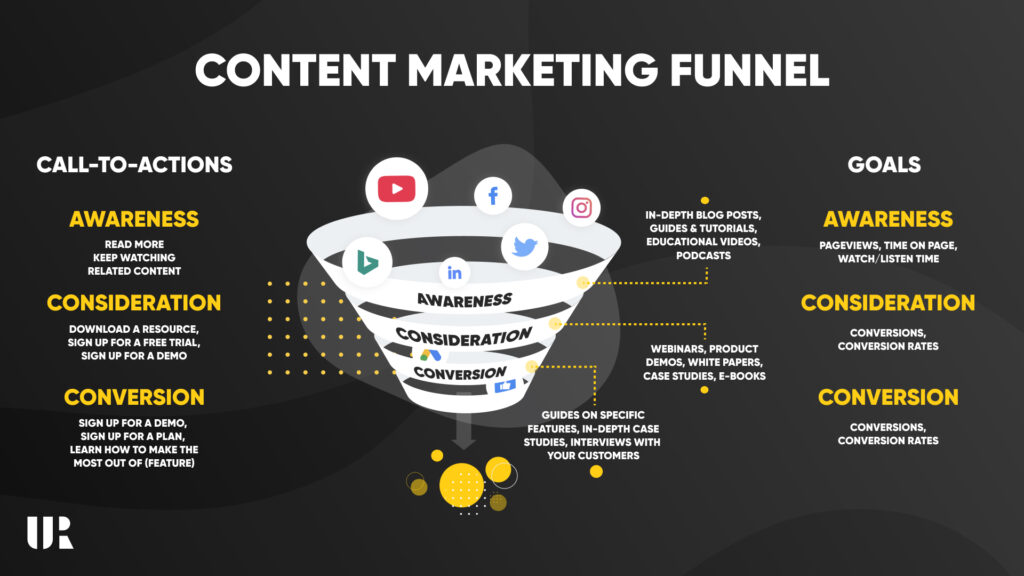
Step 4: Establish a publishing frequency
When it comes to creating an editorial calendar and defining your frequency of publishing content, there are no one-size-fits-all rules.
The important thing to remember is this: you’re much better off publishing high-quality content less frequently than publishing mediocre or poor content often.

Quality beats quantity. Sounds obvious, right? It’s a lot less obvious that if you publish bad content, your potential customer will see it, be disappointed with what they found, and never return.
Poor content can have a negative impact for a long time.
Luckily, the same policy applies to great content: if you invest into building valuable content that will help your audience accomplish a goal or do their job better, you’ll see a positive long-term impact. of it.
Your publishing frequency will depend on whether you’re hiring in-house or working with external agency or contractors.
Aim to publish one blog posts per week and a lead-generating piece of content (like original research or a white paper) per quarter, especially if you don’t have much content already. You can slowly build your content library up and scale it as you start seeing results.
Step 5: Promote your content
How will you make sure you get your content in front of the right people?
These are the four channels and strategies that are worth focusing on:
- Organic traffic, or search engine optimization (SEO)
- Email marketing
- Paid search and social media, or pay-per-click (PPC)
- Co-marketing opportunities (partnerships)
Organic search
If you follow the keyword research process we’ve covered in the second step, you’re already in a great place.
However, there are a few other elements to keep in mind as you optimize your content and your website for search engines:
- Follow on-page SEO best practices, such as internal and outbound linking, correct header and subheaders, image optimization, related keywords
- Create content that brings new perspectives, examples, and expertise to the table compared to the other, existing content
- Make your website structure, navigation, and back-end setup technically sound
- Revisit all the content you create after 6-12 months so you can update it if necessary
Email marketing
Email will help you deepen your relationship with your audience. They’re already familiar with you and decided they trusted you with their email address (and, if they’re your customers, their money!), so you can build upon it.
Best email campaigns are the most relevant ones. You can be sure you’re sending relevant emails when you’re properly tagging and segmenting your email database.
Tags and segments help you differentiate between customers and non-customers, as well as specific interests based on links they’ve clicked on and features they’ve checked out.
Use this knowledge to create:
- Product updates
- Onboarding sequence for free trial customers
- Onboarding sequence for paying customers
- Walkthrough emails for new features
- Free email courses
- Exclusive customer content
Paid search
Here’s the great news: all of the strategies we’ve covered so far don’t just apply to inbound marketing. Because you now know how to create content that has super specific pain points in mind, you can use this specificity to create hyper-targeted paid ads.

Even better, once you add options like remarketing lists and Facebook pixel to your paid advertising toolbox, you can create a complete experience through the customer journey based on what your reader engages with.
Co-marketing partnerships
Finally, you can borrow an audience that someone else has already built—provided there’s mutual benefits for you and them.
This can take shape in many ways with a company or an influencer that fit with your SaaS product. You can:
- Host a webinar together
- Write guest posts for each other’s blogs
- Create original research together
- Interview each other on a podcast or a video interview
- Provide a free tool for each other’s audience
A great example of a SaaS company that does this regularly is Later, an Instagram scheduling tool. They regularly host free Instagram trainings with Elise Darma, an Instagram consultant. Win-win!

Focus on one or more of the four channels and strategies to promote your SaaS content:
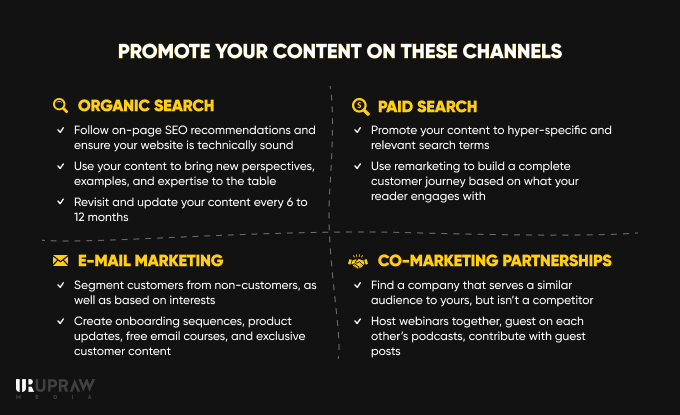
Step 6: Repurpose your content
The last step of creating your SaaS content marketing strategy is about increasing the mileage of your hyper-valuable, in-depth blog posts.
Here’s the great thing about quality content: it can be transformed into other formats and live on other channels.
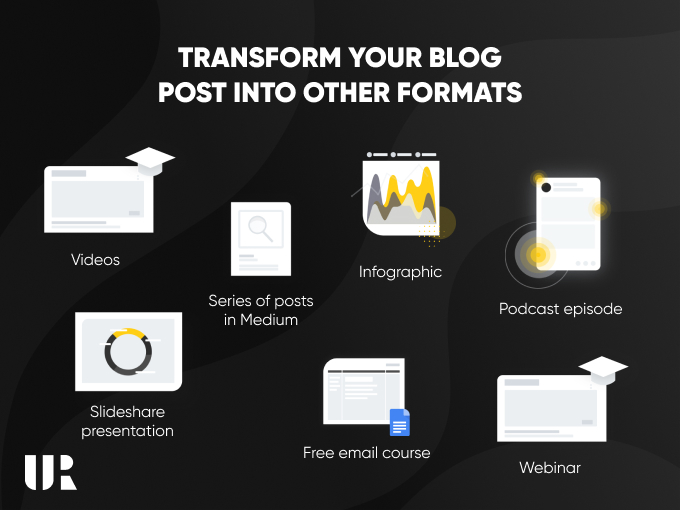
You can turn a great blog post into:
- A podcast episode
- A series of short videos to be used on social media
- A webinar
- An infographic
- An email series, like a free email course
- A SlideShare presentation
- A series of posts on Medium
…and so on.
A great example from the SaaS world comes from Linnworks, an order management software. They shared their blog post on last posting dates for Christmas 2018 on Twitter as an 80-second video:
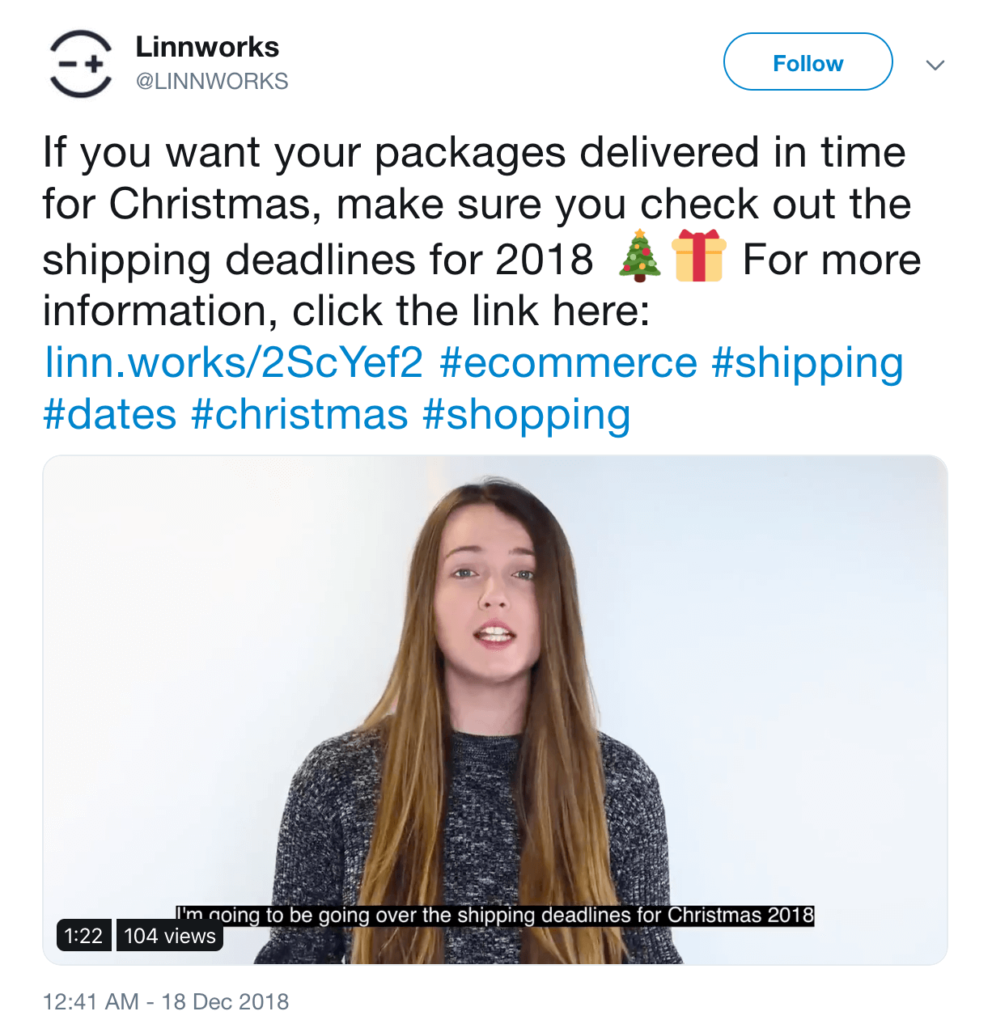
Your options for content repurposing are endless. Brainstorm some repurposing ideas and work on them one at a time. When you see which ones work best for each channel, do more of that for other posts and build them into your marketing plan.
Tools to empower your SaaS content marketing efforts
Want your content marketing process to be sustainable and efficient? Here’s a list of tools that will help you run every aspect of your SaaS content marketing.
Content research and SEO
- Ahrefs – Identify keyword opportunities, research competitors, and track backlinks. (Plans start at $99/month, $7 trial for 7 days available)
- SEMrush – Research topics, get keyword ideas, and track your social media presence. (Plans start at $99/month, free trial and free limited version available)
- Clearscope – Optimize your content for comprehensiveness and relevance. (Plans start at $350/month)
- Buzzsumo – Discover and analyze content that performs well on social media. (Plans start at $99/month, free trial available)
- Keywords Everywhere – Chrome extension that shows you search volumes, CPC, and competition inside Google search results. (Plans start at $10 for 100,000 searches)
Content creation and experience
- Airstory – Write in a collaborative manner and add insights from your research with a Chrome extension. ($6.47/month for agencies and large businesses, free version is sufficient for most users)
- Grammarly – Write clearly, efficiently, and mistake-free. (Premium plan is $29.95/month, free version available)
- CoSchedule Headline Analyzer – Score your headline quality and see how well it might perform on search and social. (Free)
- Loom – Enrich your written content with screencasts for visual walkthroughs. (Plans start at $8/month, free version available)
- Canva – Create blog and social media images from templates with an easy drag-and-drop editor. ($12.95/month, free version available)
- Unsplash – Thousands of free photos on any topic you can imagine, usable for commercial and non-commercial purposes. (Free)
- Uberflip – Create full digital experiences and content hubs. (Plans start at around $1,200/month)
- Feedly – Build a stream of RSS feeds you can always go to keep track of the newest insights you can feature, as well as to monitor competitor’s content. (Plans start at $7/month, free version available)
- Piktochart – Create infographics, data visualizations, presentations, and more. (Plans start at $29/month, free trial and free limited version available)
Email marketing
- ConvertKit – Email marketing tool that lets you segment and automate your emails. It’s targeted at content creators. (Plans start at $29/month, free trial available)
- RightMessage – Change your website based on the visitor and their behavior to optimize your sales funnel. (Plans start at $29/month, free trial available)
- Sumo – Add opt-in forms, drive social shares, and engage visitors with features like smart bar at the top of the page, popups, and welcome mats. (Plans start at $39/month, free version available)
- OptinMonster – Generate leads by converting abandoning visitors. (Plans start at $19/month)
Content promotion
- Buffer – Schedule social media promotion and monitor social conversations. (Plans start at $15/month, free trial available)
- Quuu Promote – Promote your content through real, relevant people who share it on their social accounts. (Plans start at $40/month)
- Mailshake – Use cold outreach to build links and press coverage for your content. (Plans start at $39/month)
Content schedule and project management
- CoSchedule – Run your entire marketing and content calendar from a single platform. (Plans start at $20/month, free trial available)
- Asana – Manage your content marketing projects from a powerful project management tool. (Plans start at $13.49/month, free version is sufficient for most users)
- Trello – Keep track of content marketing tasks in a kanban-style tool that can also function as a content calendar. (Plans start at $12.50, free version is sufficient for most users)
- Zapier – Automate your projects by connecting and integrating multiple apps. (Plans start at $24.99, free version available)
Content analytics
- Google Analytics – Free and powerful analytics, including traffic sources, visitor behavior, conversions, and much more. (Free)
- HotJar – See how your visitors consume your content with website heatmaps. (Plans start at $29/month, free version available)
- Nudge – Gain additional insights into your content’s performance. (Pricing not available publically; listed as “platform fee that scales based on traffic volume”)
Conclusion
SaaS marketing is an iterative process. You will always keep learning about your target readers and your most successful customers, and that’s a good thing—your content will keep getting better, and you’ll be able to scale your efforts.
You’ll find out which type of content suits your readers in which stage of the customer journey. You’ll see what makes your best pieces of content successful.
As a result, you’ll attract readers that have made your content a regular part of their routine. They will become your most prospective leads and, down the road, your most loyal customers.
If you follow the process we’ve outlined, SaaS content marketing will pay off.




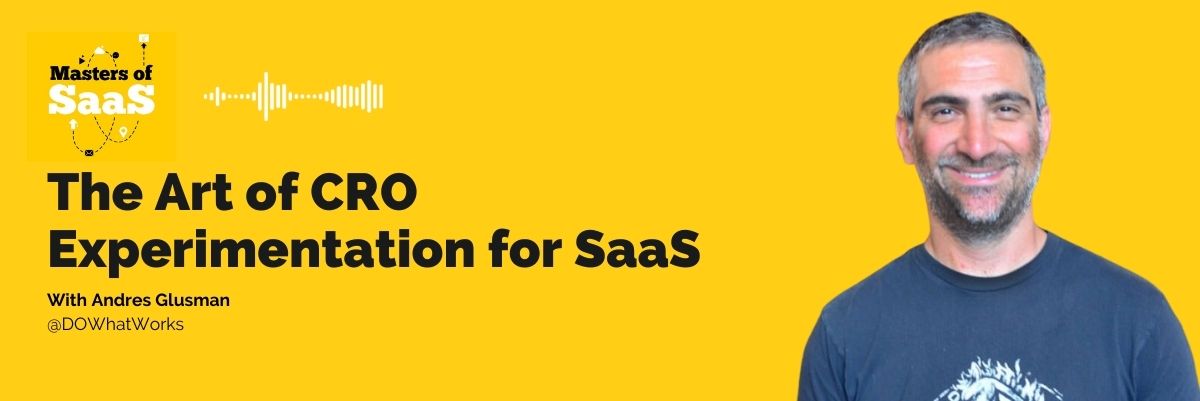
Share